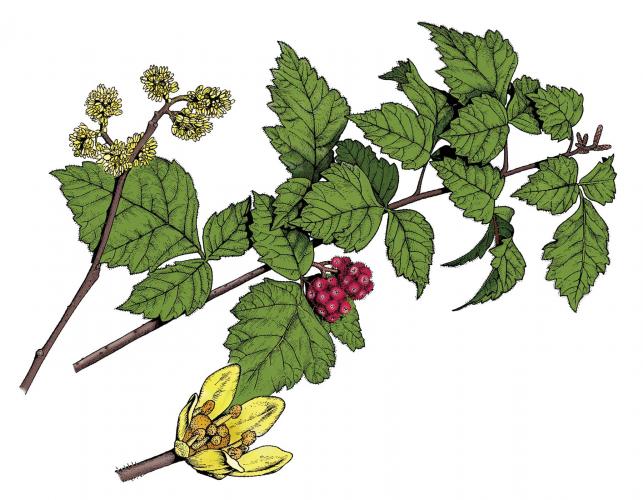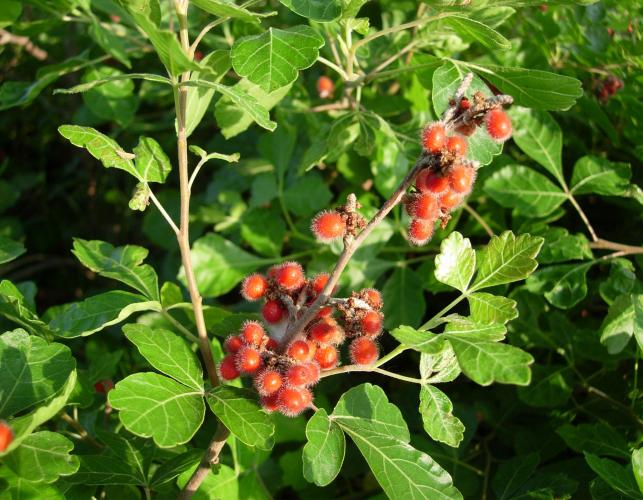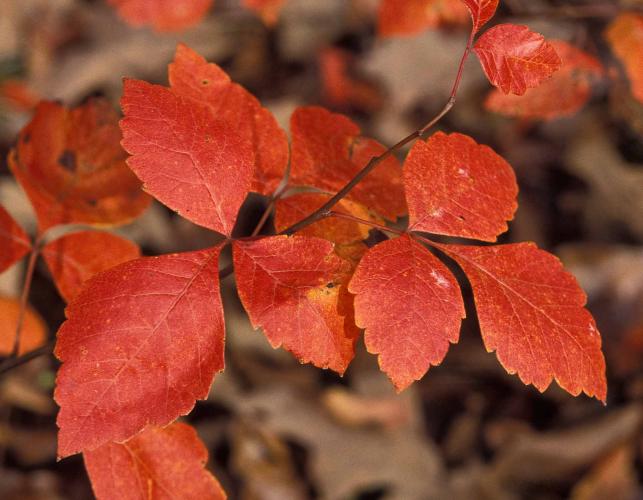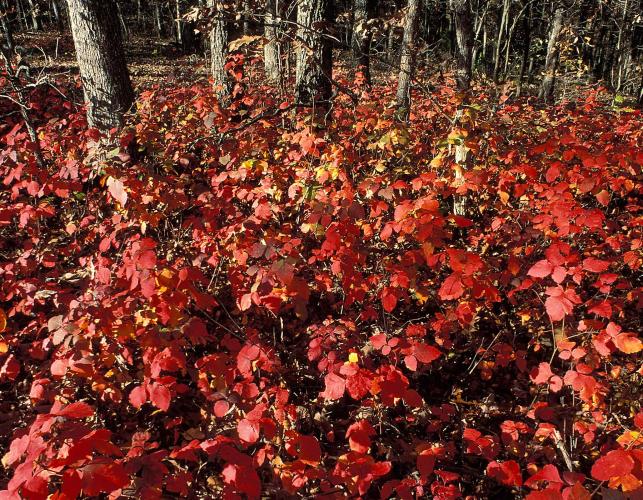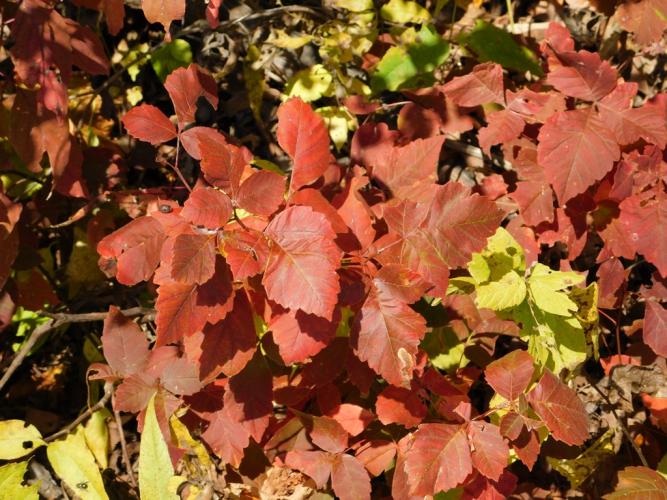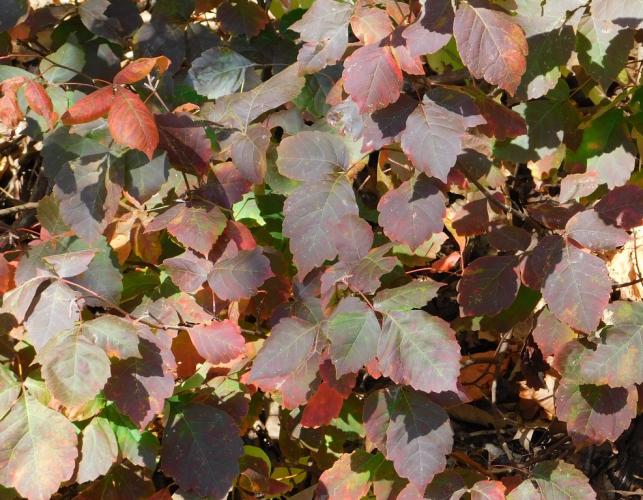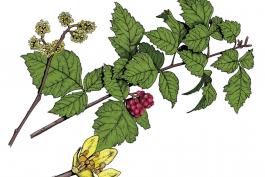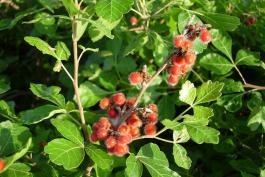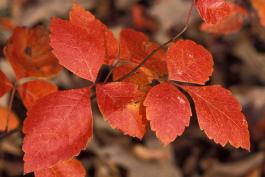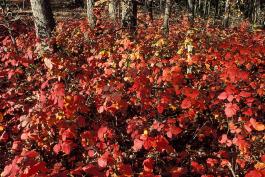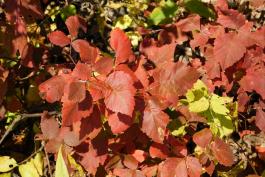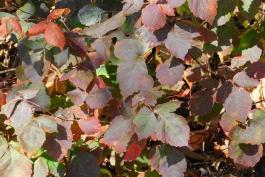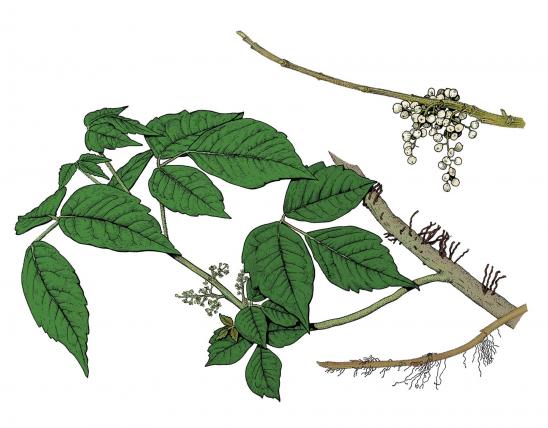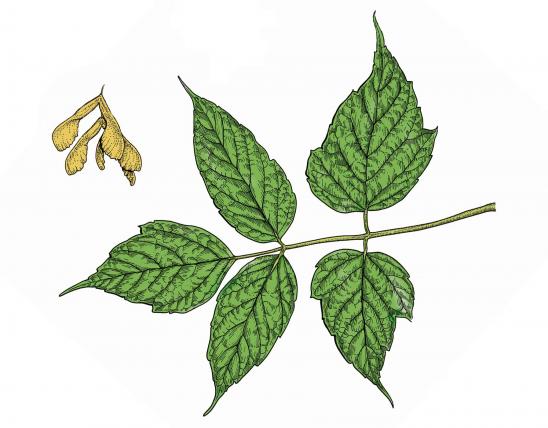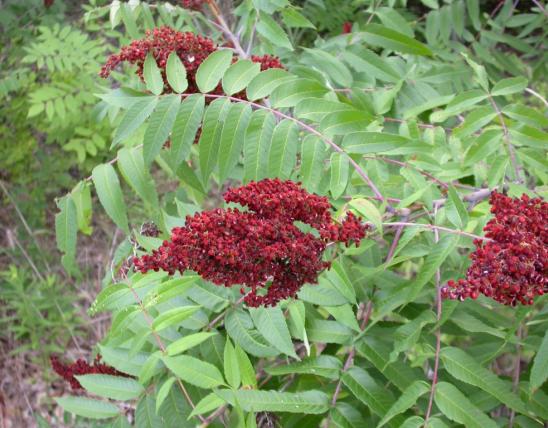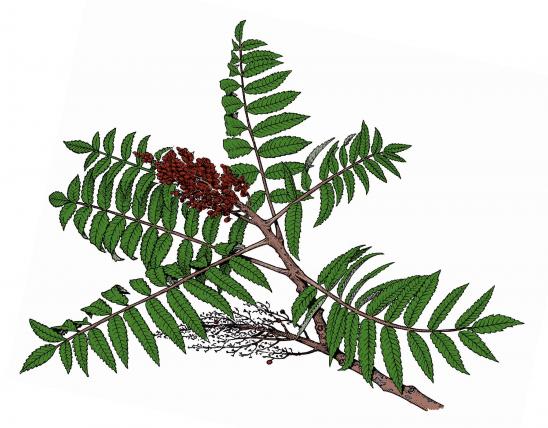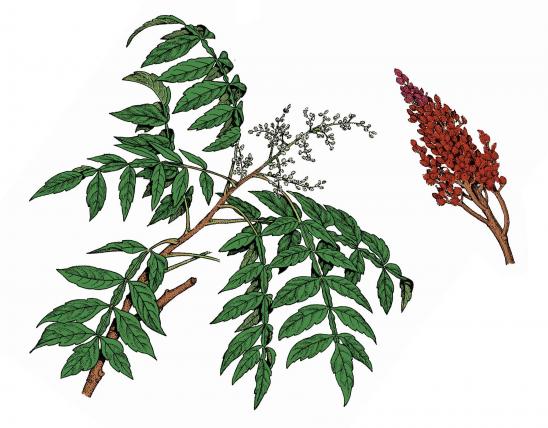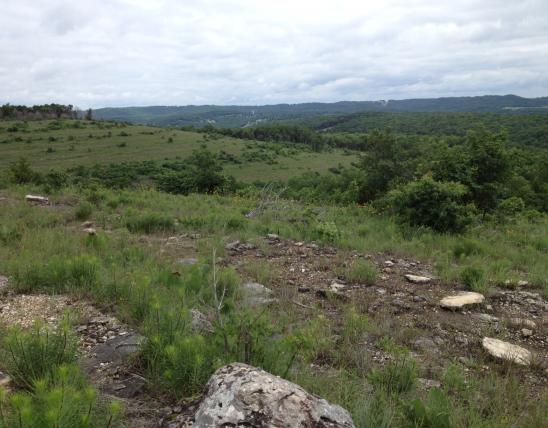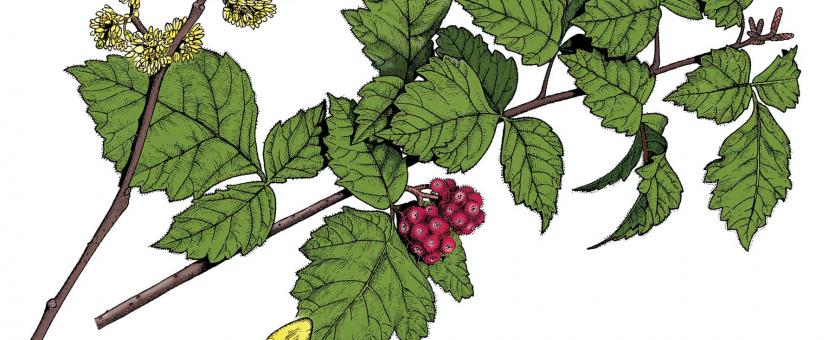
Fragrant sumac is a thicket-forming shrub, with branches ascending or lying on the ground.
Leaves are alternate, compound with three leaflets, leaflets lacking stalks; terminal leaflet 2–2½ inches long, short stalked, egg-shaped, tip pointed to rounded, margin lobed or coarsely toothed, lower edge lacking teeth; foliage fragrant when crushed.
Bark is dark brown, smooth on young stems, becoming cracked later; pores prominent.
Twigs are slender, flexible, brown, hairy, becoming smooth later.
Flowers late March–April, before the leaves; clusters 1½ inches long, at ends of twigs (not along stems); flowers small, yellowish-green; petals egg-shaped, tips pointed; stamens shorter than the petals.
Fruits May–July, round, red, hairy, about ¼ inch long.
Similar species: Poison ivy looks similar, but the terminal leaflets on poison ivy are on stalks ½–1¾ inches long, and its berries are creamy-white and hairless. Also, poison ivy can climb as a vine, with aerial roots, while fragrant sumac doesn't climb at all.
Height: to 8 feet.
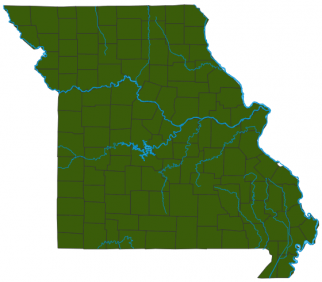
Statewide.
Habitat and Conservation
Occurs in rocky or open woods, in thickets, on glades, and along ledges. Increasingly used as a native landscaping plant, there are now a selection of varieties and cultivars available, some taller, some shorter or "dwarf." Depending on the type, fragrant sumac can make a good foundation planting or a good screen during the growing season. Fragrant sumac is drought tolerant and thrives in full sun; the leaves turn red and orange in fall.
Status
A small native Missouri shrub. Becoming popular as a landscaping plant.
Human Connections
Does well as a border planting along woods. In fall, the leaves turn brilliant hues and add to its value as a shrub.
Some people make an iced tea from the sour berries, sweetened like lemonade.
If you plant this, you can have a bit of fun surprising visitors who can't tell it from poison ivy!
Ecosystem Connections
The fruit is eaten by many species of birds and mammals.
To survive during severe winters, rabbits eat the bark.
